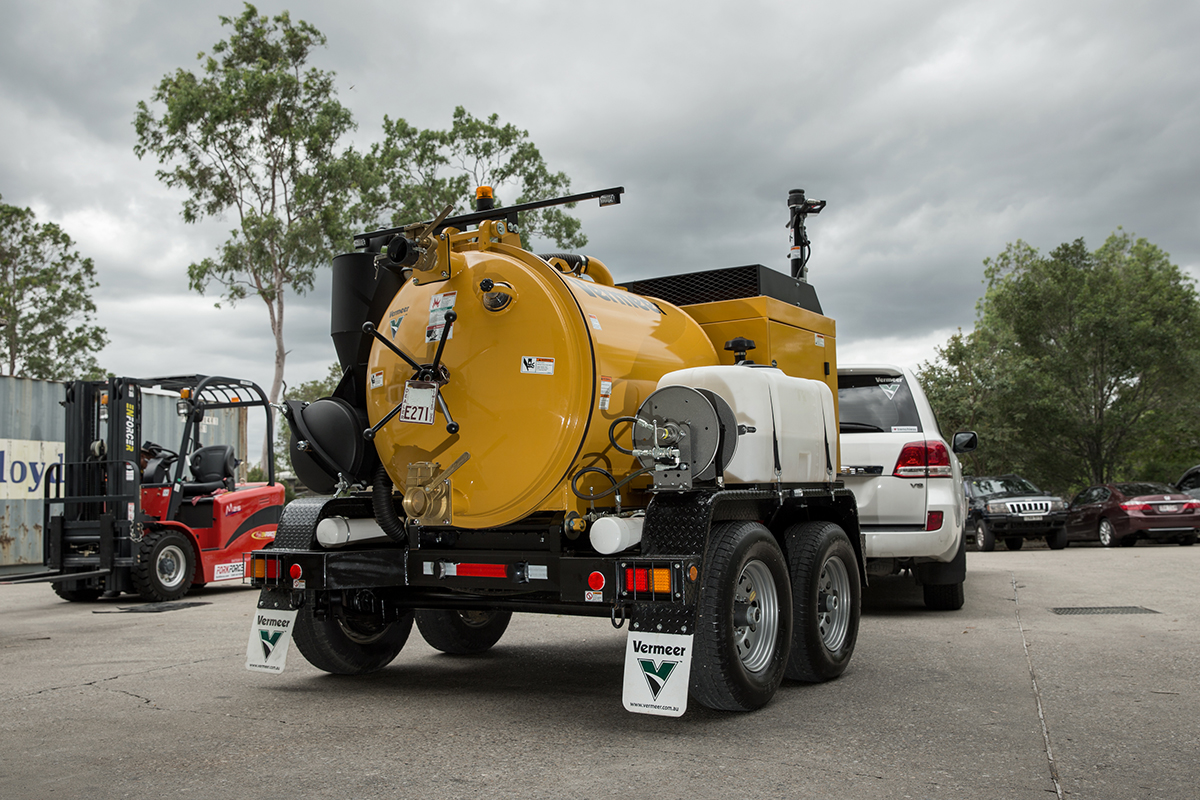The demand for non-destructive digging (NDD) solutions has seen a surge in demand for vacuum excavation across a wide range of industries and applications. We spoke to Vermeer Australia Marketing Manager Steve Reeves about the many opportunities that this technology offers to Australia’s Landscape Contractors.
This surge in demand for ‘vac ex’ is being driven by factors including the increased mandating of NDD by municipalities, the availability of vacuum excavators in a wide range of sizes and configurations, and the diverse applications of this technology to today’s job sites.
“Often, once a contractor buys their first vacuum excavator, its use expands to applications beyond the original intended use, realising new revenue streams and/or efficiencies in their business. Today’s trailer-mounted vacuum excavators, like Vermeer’s VX30-250, are well-suited to landscaping applications due to their portability and as only one person is required to operate the unit.”
How does vacuum excavation work?
A vacuum excavator uses high-pressure water from a handheld wand to break down soil, which is then removed by high-volume air through a vacuum hose and deposited into a spoil tank on the unit. “This process is inherently non-destructive, hence the term non-destructive digging or NDD. The high-pressure water and vacuum can also be used independently for many tasks, including water blasting to clean objects and vacuuming of solid and liquid waste.”
Vacs are typically available in compact trailer-mounted models, with larger truck-mounted vacs chosen for higher volume applications.
Applications in landscaping and facilities management
Excavation around existing underground utilities
Damaging existing utilities can be very costly in terms of job downtime, significant fines from utility owners, and safety risk. “When used correctly, the relatively non-destructive water and air pressure used in vacuum excavation will not damage existing utilities like a backhoe, excavator, or mattock. In practice, the process exposes and cleans off the existing utilities, giving the operator access to work around or tap into them.” Typical landscaping applications include the installation and maintenance of irrigation and lighting systems, fencing, retaining walls, and general excavation as part of hardscape construction.
Irrigation solenoid installation and maintenance
Working in irrigation solenoid boxes filled with dirt (not to mention spiders and other wildlife…) has always been a challenging part of the landscaper’s day. In addition to installing a new valve box, a vac can be used to gently remove dirt from around the sensitive solenoid wiring so you can get a clear view of the job.
Arboriculture and tree care
Its inherently non-destructive nature means that vacuum excavation is an ideal means of excavating around sensitive trees and infrastructure. The use of appropriate nozzles and water pressure enables excavation without damage to trees for tasks such as root inspection as part of pest insect and disease management, root deflector/ barrier installations, selective root pruning and isolation of root ball in transplanting. As a means of excavating for tree planting, there is the added benefit of water being introduced as part of the process.
Open spaces maintenance
As a tool for facilities maintenance, vacs have many uses including high-pressure water blasting, gutter cleaning and leaf fall removal, debris and liquid waste cleanup, and countless other specialised applications such as removal of roofing insulation material and cleaning of roof cavities.
Click here to view the full article in the July edition of Landscape Contractor Magazine.

 MyDealer:
MyDealer:


